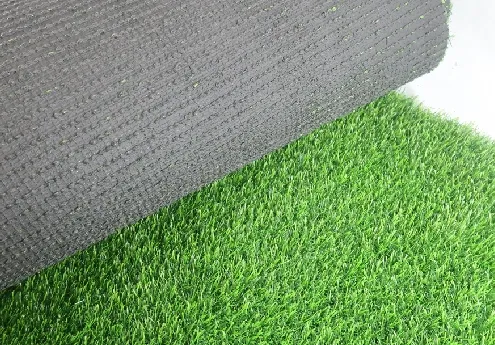
- Afrikaans
- Arabic
- Belarusian
- Bengali
- Czech
- Danish
- Dutch
- English
- Esperanto
- Estonian
- Finnish
- French
- German
- Greek
- Hindi
- Hungarian
- Icelandic
- Indonesian
- irish
- Italian
- Japanese
- kazakh
- Rwandese
- Korean
- Kyrgyz
- Lao
- Latin
- Latvian
- Malay
- Mongolian
- Myanmar
- Norwegian
- Persian
- Polish
- Portuguese
- Romanian
- Russian
- Serbian
- Spanish
- Swedish
- Tagalog
- Tajik
- Thai
- Turkish
- Turkmen
- Ukrainian
- Urdu
- Uighur
- Uzbek
- Vietnamese
football artificial grass
Dec . 03, 2024 12:52 Back to list
The Rise of Artificial Grass in Football A Game Changer for the Sport
In recent years, the world of football has witnessed a significant transformation with the increased adoption of artificial grass. Traditionally, natural grass has dominated football fields globally. However, advancements in technology and a growing need for year-round consistency in playing surfaces have propelled artificial grass to the forefront of the sport. This article delves into the benefits, challenges, and future of artificial grass in football.
Benefits of Artificial Grass
One of the primary advantages of artificial grass is its durability. Unlike natural grass, which can become muddy and uneven during wet weather, artificial turfs provide a consistent playing surface regardless of weather conditions. This reliability allows for more scheduled matches and training sessions, minimizing cancellations and ensuring that players can practice and compete without interruptions.
Another significant benefit is the reduced maintenance cost associated with artificial grass. Maintaining a natural grass pitch requires regular mowing, watering, and fertilization. In contrast, artificial grass requires minimal maintenance, typically needing occasional cleaning and infrequent infill replenishment. This reduction in upkeep not only saves clubs money in the long term but also significantly cuts down on the resources used, which is an important consideration in an era where environmental sustainability is becoming increasingly important.
Moreover, artificial grass is designed to be more resilient than natural grass, making it a safer option for players. Many modern artificial surfaces are engineered to absorb impact better, reducing the risk of injuries such as sprains and tears. This is particularly crucial in a contact sport like football, where player safety is paramount.
Challenges and Controversies
Despite its many advantages, the use of artificial grass in football has not been without controversy. A primary concern among players, coaches, and purists is the feel and playability of artificial surfaces compared to natural grass. Critics argue that the ball behaves differently on artificial turf, affecting how the game is played. Players often express a preference for the traditional grass fields, which they believe provide a more authentic experience.
football artificial grass

Furthermore, some studies have raised health concerns regarding the materials used in artificial grass, particularly regarding the infill, which can contain rubber granules sourced from recycled tires. The potential for players to inhale or come into contact with harmful substances during play has sparked a debate over safety standards and regulations.
The Future of Artificial Grass in Football
Looking ahead, the evolution of artificial grass technology appears promising. Researchers and manufacturers are continually developing new materials that aim to address safety and performance issues. Innovations such as organic infills and environmentally friendly components are being tested to mitigate health concerns while enhancing the playing experience.
The demand for artificial grass is likely to continue growing, particularly in regions where maintaining a natural grass field is impractical due to climate conditions. Football clubs and organizations around the world are increasingly recognizing the benefits of artificial surfaces, leading to a more favorable outlook for their implementation in the sporting infrastructure.
Moreover, the trend extends beyond professional leagues. Youth football programs and community fields are also adapting to artificial grass, enabling younger generations to benefit from consistent playing conditions. This inclusivity can foster a greater love for the game and ensure that aspiring athletes have the opportunity to practice and compete, regardless of the season.
Conclusion
Artificial grass has undoubtedly transformed the landscape of football, offering myriad benefits that are too significant to ignore. While challenges remain, particularly concerning player safety and preferences, the continued advancements in technology and materials hold the potential to create a harmony between artificial and natural grass. As the football community embraces change, the vision of an enriched, sustainable, and accessible future for the sport is on the horizon, with artificial grass playing a pivotal role in this exciting evolution.
-
The Benefits of Artificial Turf for Indoors
NewsJul.15,2025
-
How Artificial Grass Suppliers Ensure Quality Products
NewsJul.15,2025
-
Artificial Grass and Pets: A Space for Relaxation
NewsJul.08,2025
-
Balcony & Outdoor Decoration with Artificial Grass
NewsJul.08,2025
-
Best Indoor Artificial Grass for Home
NewsJul.07,2025
-
Best Pet Turf for Dogs: Safe & Durable Artificial Grass Options
NewsJul.07,2025
Products categories









